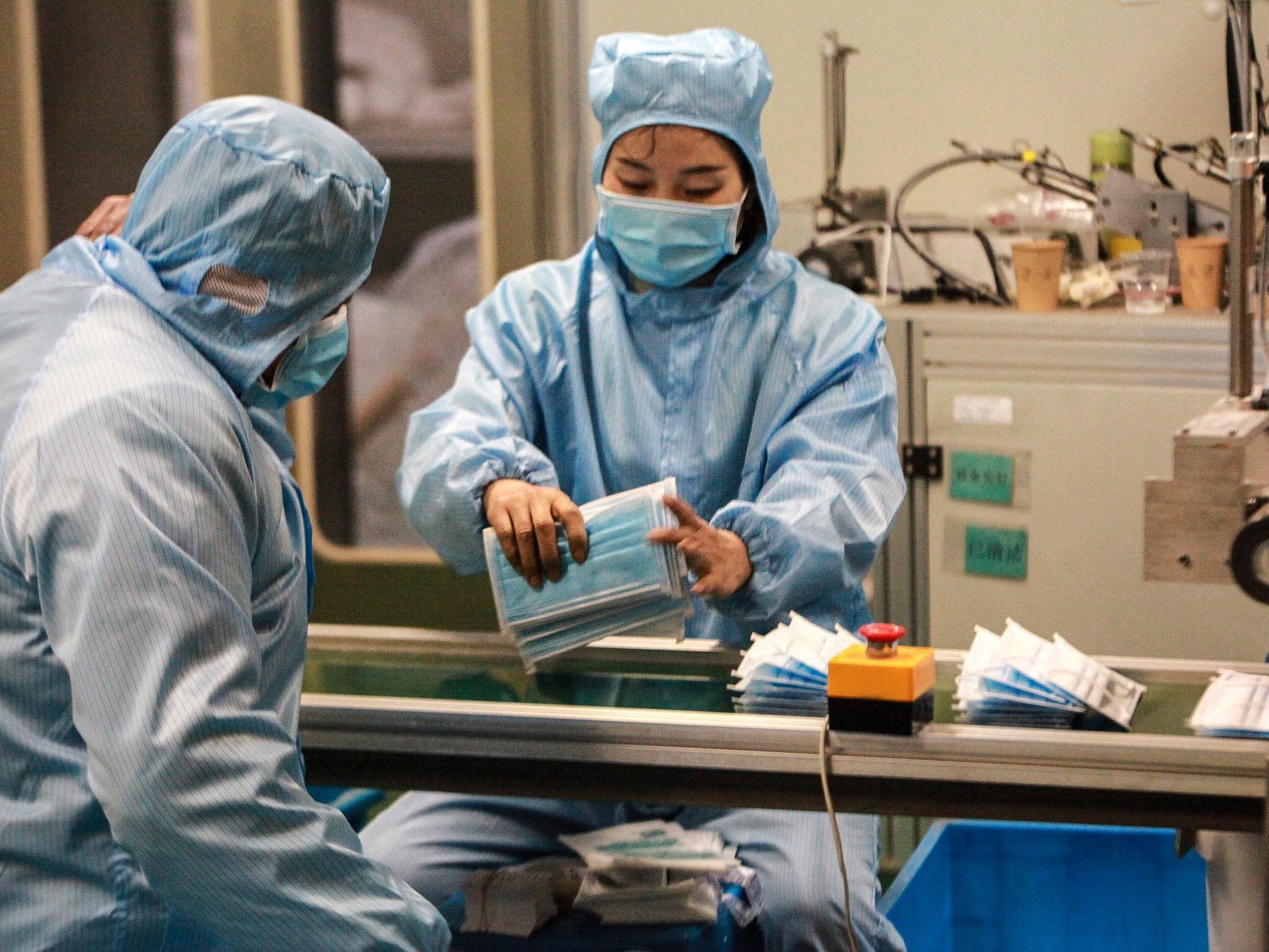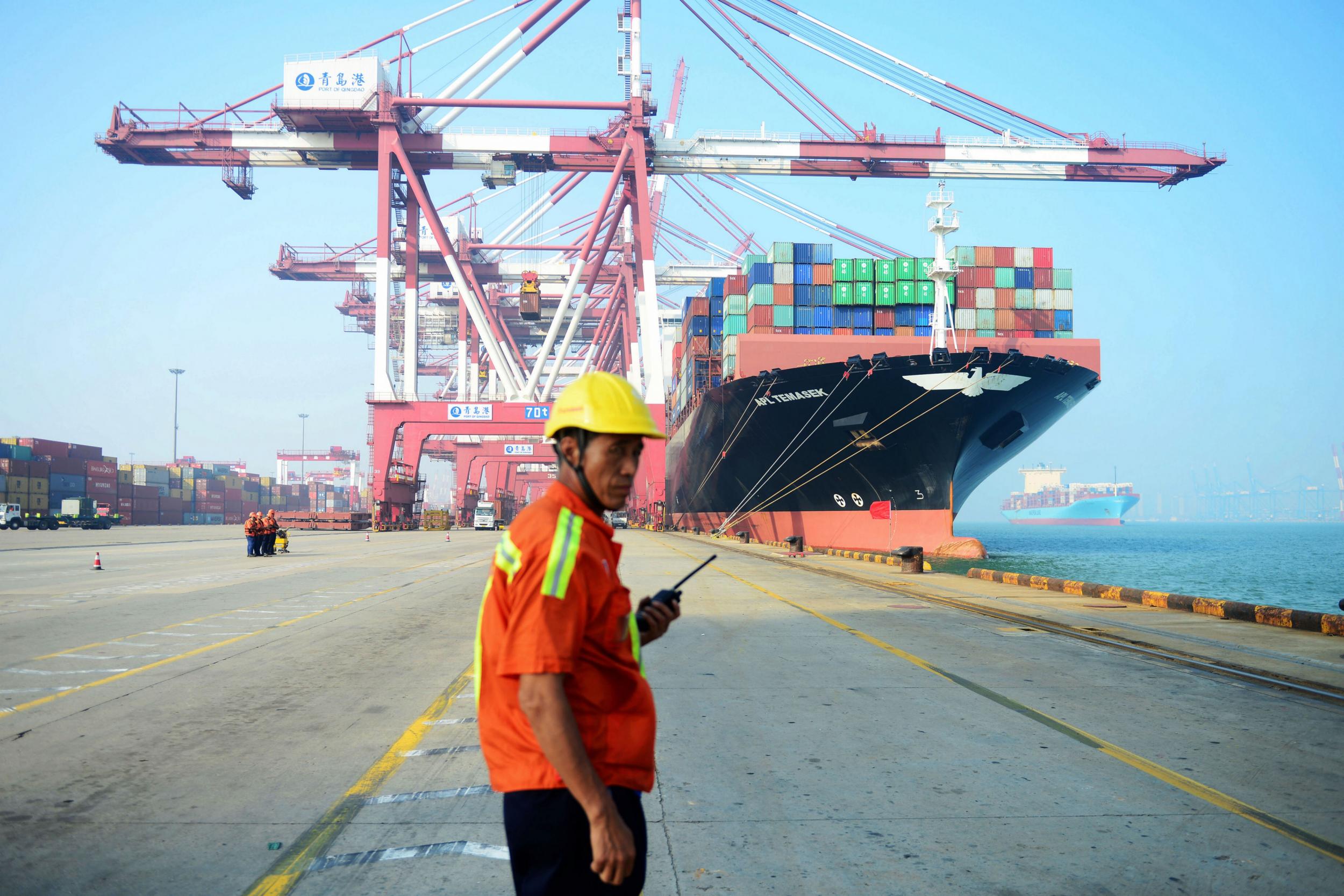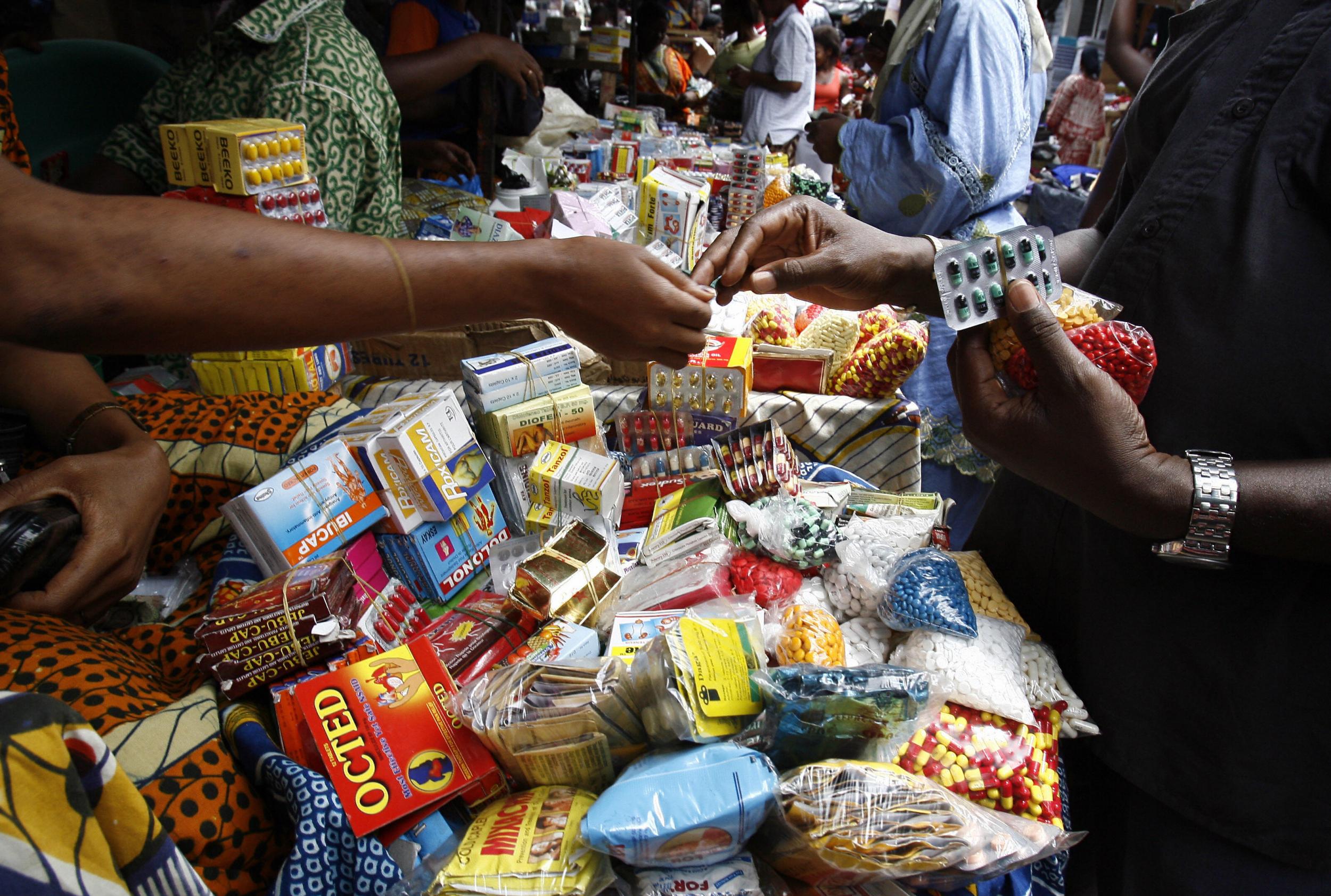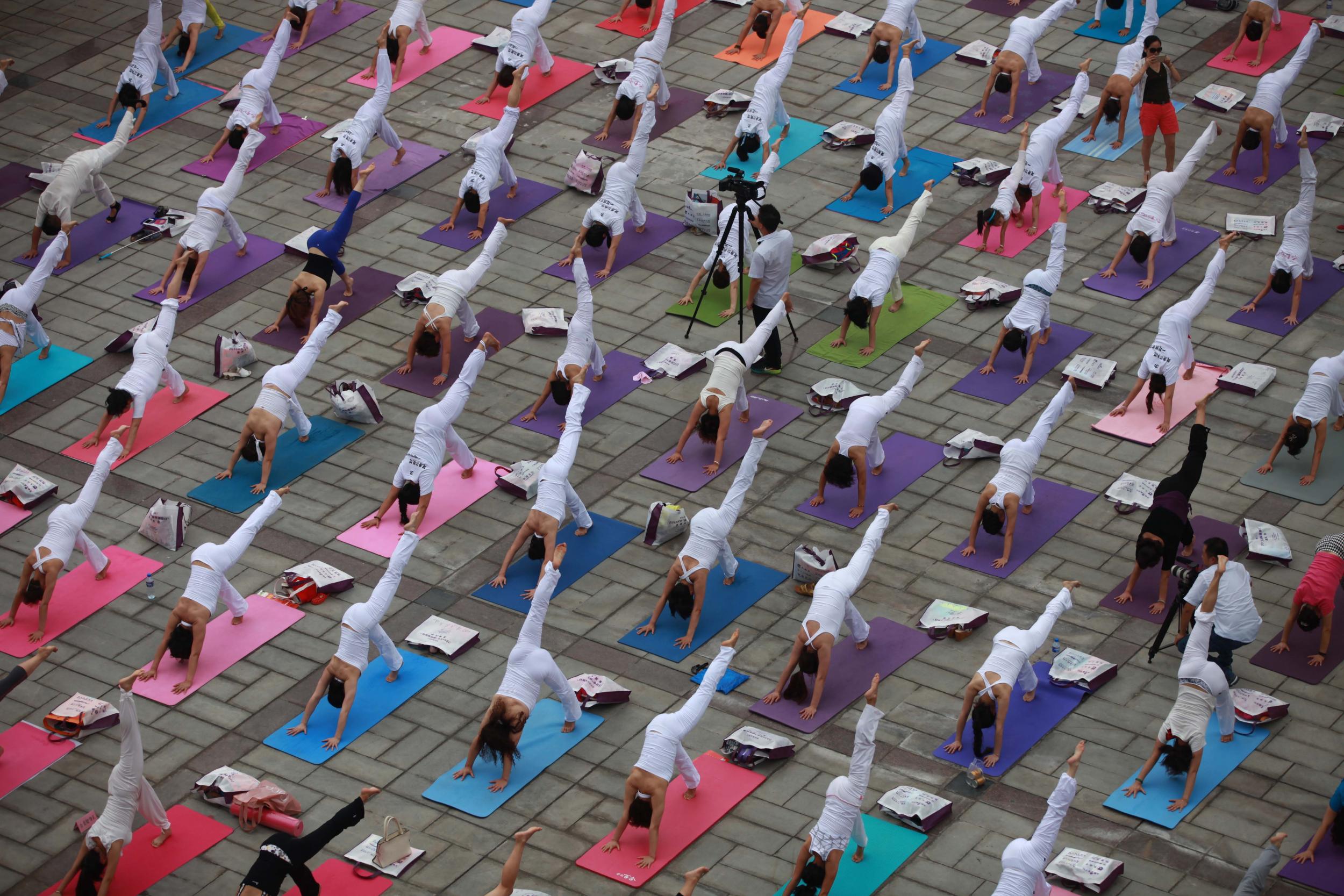How standards shape every aspect of our modern lives
From shipping containers to yoga mats to a piece of A4 paper, without the global network of standards-setting organisations, our lives would be very different, writes Len Williams

For much of 2020, Nathan Shipley and his colleagues have been conducting curious tests on face masks in a Hemel Hempstead laboratory. “We atomise paraffin oil and sodium chloride [salt] so it is in very small particles suspended in the air. We then suck that air through the mask and measure to see how much has been filtered out.”
Shipley is a PPE testing specialist at the British Standards Institute (BSI), a body which conducts standards tests for thousands of products. The team usually tests personal protective equipment (PPE) for industrial use, but has reconfigured their processes to assess which masks and face screens can be redeployed in a clinical setting – and protect the wearer from Covid-19. If a mask filters out any less than 94 per cent of particulates in the air, it will not pass their tests.
The BSI and organisations like it are part of a wider ecosystem of standards bodies that have a profound influence on global trade and the lives of almost everyone on Earth. If you have ever used a credit card, browsed a website, received a phone call, printed a document or indeed used practically any product or service, your life has been touched by standards bodies. Yet despite the reach and influence of these organisations, most people have never heard of them.
World makers
“The creation of standardised shipping containers has lowered the costs of transcontinental shipping and port calls by more than 90 per cent,” says Craig N Murphy, a professor of political science at Wellesley College, Massachusetts, and an author of books on standards organisations. “This is much more important than all of the tariff reductions which have been done by any of the international trade treaties.” Standardised shipping containers, he suggests, “have much more to do with the world we live in today than even the World Trade Organisation.”
Before shipping containers became a standard shape, stevedores would have to perform a kind of Tetris, fitting different shaped packages into a ship’s hold. However, the creation of the standard sized shipping container that are now ubiquitous cut the costs and time involved in transporting goods. None of this would be possible without standards-setting bodies – most notably the International Organisation for Standardisation (ISO).
So, what exactly is a standard? The ISO defines a standard as “a formula that describes the best way of doing something”. Standards are usually documents which describe in detail how to create a product, manage a process, provide a service or more broadly do or make something. The Geneva-based ISO, which is perhaps the standards body with the biggest footprint (there are several others) has published over 22,000 of the things since its creation in 1947.
Standards setting bodies are a kind of “meta-organisation”, or organisations of organisations says Nils Brunsson, a professor at Sweden’s Uppsala University. So why do they exist? “If you look at the history, firms realised they needed coordination between themselves.” Governments do not necessarily want to create legislation about every last detail of manufacturing, “so this was delegated to industry itself”, says Brunsson. Standards bodies basically facilitate this coordination between stakeholders in different industries.

These different organisations decide to make standards because they usually come to realise they would all benefit by having a standard in place. For the sake of example, imagine someone decided to propose a standard for the design of yoga mats.
Different parties, such as yoga mat manufacturers, instructors and the Indian government might all decide it would be a good idea to have a standardised yoga mat because this would help them all in different ways. It would stop people making low-quality yoga mats (boosting the reputation of accredited manufacturers), mean people enjoy yoga more (helping instructors get more customers) and get people more interested in going on yoga holidays (helping the Indian tourist board).
Think about the A4 paper family. It is now possible for anyone to print a document anywhere, because all printers and software use the same size paper. Without standardisation it would not be possible
Standard operating procedure
Maria Lazarte is the communications officer at the ISO and she walks me through how a standard is set. “It starts with a proposal which can come from three different parties”: an ISO member (such as the BSI in the UK), a technical committee made of experts in a field, or from a partner organisation (such as the UN or an international charity).
Once a proposal is submitted, the ISO’s members vote on whether a standard is needed. If it gets approved, a technical committee of experts is formed – these people could be from governments, industry bodies, companies, academia or whatever. A draft is then put together and this is voted on by ISO members. If approved, it eventually becomes a standard. If not, the experts go back to the drawing board.
“The average time for creating a standard at the moment is 32 months,” says Lazarte. If it sounds like a slow and technical process, that’s because it is. “One reason these organisations get such little journalistic and academic attention is that you have to have a lot of technical knowledge to understand what is going on in a committee,” says Craig N Murphy.
While the way they’re made might not get the pulse racing, the influence of these standards is extraordinary. Lazarte describes just some of the most relatable standards that the ISO has created rules for. “Think about the A4 paper family. It is now possible for anyone to print a document anywhere, because all printers and software use the same size paper. Without standardisation it would not be possible.” The ISO is behind JPEGs, which let you share picture files between any computer operating system. They set the size of credit cards, the shape of building site hard hats or the design of emergency exit signs used in public buildings the world over.

There are even ISO standards for making a cup of tea, boiling pasta or the ideal shape of a wine glass. Lazarte says the ISO is also facing forwards, creating standards for safe artificial intelligence, personal care robots and more.
While they are influential, standards are not laws. Bodies like the ISO have no power to enforce once standard or another – companies can happily ignore them if they want. That said, in many cases standards do become de facto legislation because governments may demand companies conform to them if they want to sell into a particular market.
A world of standards
Standards are the oil that greases the wheels of international trade. Without standards, so much of what we take for granted would be near impossible, and our lives perhaps less rich.
“Most citizens have no understanding of how standards relate to the things they do,” says Adrian Scrase, CTO at ETSI, a telecoms standards body with an HQ in France. ETSI was originally created to support smooth telecommunications within the EU, but it now has members around the world. It is thanks to bodies like ETSI that “you take it for granted that your mobile phone will work when you get off an aeroplane anywhere in the world”. Thirty to forty years ago, mobile phones would only work within the user’s own country. However, thanks to several thousand standards that have been “painstakingly drafted”, we take our phones abroad without a second thought.
For Scrase, standards mean that there is a more level playing field – new companies can figure out how to make a product that will work and then specialise and improve, meaning “consumers end up with more choice”.

For Maria Lazarte of the ISO, standards help reduce the cost of R&D and saves people reinventing the wheel. For consumers, it means you can trust a product will in fact be of a good quality. And it means that people can collaborate more easily between companies and across borders because they have a common set of terms.
Standards and the state
The more I’ve learned about standards, the more I’ve noticed them, both in the minor details of everyday life, as well as in the defining political events of our age. Whether it is the Fair Trade logo on the coffee I buy or in global debates about which company should provide 5G networks.
Standards don’t touch on topics like human rights, but instead offer specifications about best practice. It isn’t our responsibility to tell organisations what to do, and governments can decide if they want to adopt these standards nationally
How can we understand the purpose and meaning of these things? Allison Marie Loconto is a sociologist who works at the French agricultural research institute. Loconto has spent several years studying “ethical” food standards, such as Fair Trade, Rainforest Alliance, Organic and so on.
“The grand theory is that standards are a tool of neoliberal governance,” she tells me. The idea is that we “outsource a certain portion of our regulation so the state doesn’t have to deal with it and we trust in these organisations to carry out the controls and set the terms”. This outsourcing of ethical rule-setting to industry conforms to the neoliberal ideology that markets alone can be left to “resolve our problems, reduce deforestation, eliminate things like child labour”.
Loconto says that getting accredited against one of these standards costs as much as $5,000 but is seen as essential by farmers in developing countries if they wish to sell to rich country buyers. This creates some potentially difficult issues. For example, small scale farmers simply cannot afford the fee to get audited, meaning it becomes much harder to export their produce.
Loconto points out that there are value judgements in the creation of standards that are important to be aware of. The food standards she has studied are influenced by “western management notions”. Many ethical food standards promote the concept of farming as a business: “they follow a specific model of what it means to plan, farm and process food products”. That is not necessarily a good or bad thing in itself, but it does involve the imposition of one culture’s way of doing things on another.
Besides ethical food, there are international standards for everything from education quality management to workplace safety. I asked Maria Lazarte whether standards bodies reach too far into areas that are normally seen as the remit of the state.

“Standards don’t touch on topics like human rights, but instead offer specifications about best practice” she says. “It isn’t our responsibility to tell organisations what to do, and governments can decide if they want to adopt these standards nationally”. Ultimately, whether you think the influence of standards is a problem or not depends on who you think should be setting rules about things – if indeed you care.
For better or worse, standardisation is deeply tied up with the form of globalisation that has come to dominate trade and culture in the last few decades. Nils Brunsson points out that it is largely thanks to standards bodies that you can easily and cheaply travel anywhere in the world and find that “everything is very similar when you get there to how it is at home”. Some people may see it as a fantastic convenience that you can withdraw money anywhere, print out tickets on the hotel computer or trust food packaging in local supermarkets. Others may see it as a kind of creeping uniformity that eliminates all diversity and uniqueness.
Could we be at the end of the standards era?
When I was a graduate in 2011, I spent a year working as an English teacher in a west African city. One week I began to feel increasingly fatigued, to the point I could barely stay awake. My brain felt foggy and I noticed ulcers in my mouth. Panicked I went to a pharmacy, but they couldn’t figure out what was wrong with me. Then one day I looked at the packaging on the well known brand of toothpaste I’d bought at a local shop and realised it was actually a counterfeit. After I stopped using the dodgy toothpaste, I felt better within hours.
For me, this is the selling point of standards. In countries with rigorous testing, that fake toothpaste would never have been allowed on the market. It means consumers can trust the quality of what they’re buying and avoid getting sick.
In many ways, standards represent an enormous human achievement, one that doesn’t get the recognition that it deserves. And while we should certainly question some of the assumptions involved in standards-setting, their benefits are not inconsiderable.
However, while standards are deeply entwined with modern life, this doesn’t necessarily guarantee they will be with us forever, at least in their current form. Whether it is countries determined to set their own rules on standards, the cutting off of parts of the internet along national boundaries, or the setting of different standards in different spheres of influence (ie China’s 5G versus western 5G), our current notion of global standards may not be with us forever.
While we don’t notice standards when they are there, we might well miss them once they’re gone.
Join our commenting forum
Join thought-provoking conversations, follow other Independent readers and see their replies
Comments